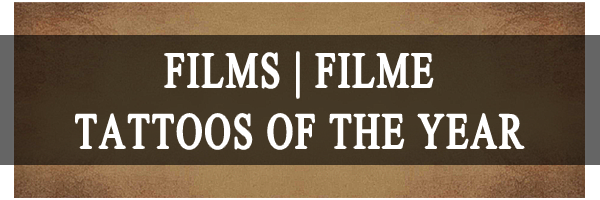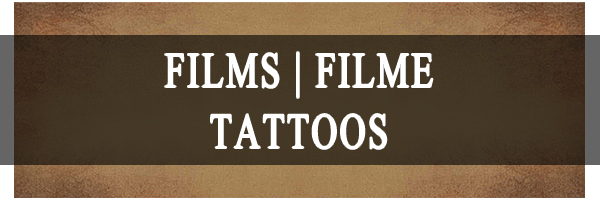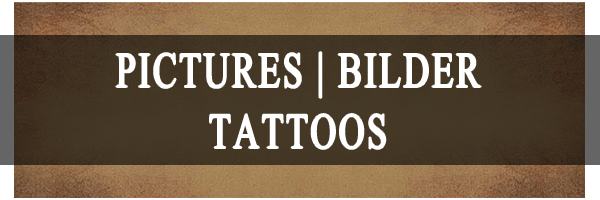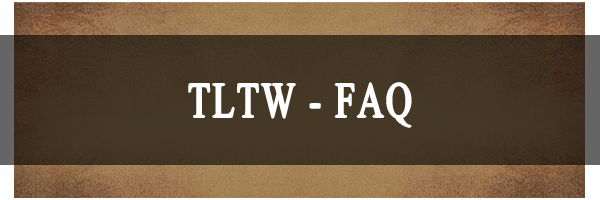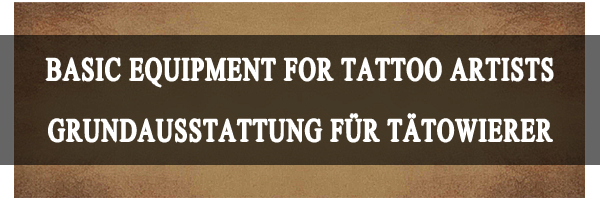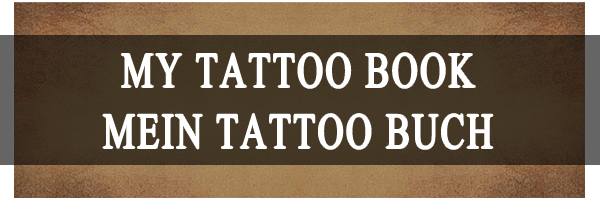 Es gibt zwei Methoden, welche die Wundheilung bei frischen Tätowierungen begünstigen. Die Feuchtheilmethode und die Trockenheilmethode. Welche der beiden Methoden bevorzugt wird, abhängig vom Tätowierer und nicht zuletzt vom Tätowierten selbst. Bedingt Einfluss auf die Wahl der Methode hat auch die Jahreszeit. So ist es in den Wintermonaten nicht empfehlenswert, die Trockenmethode zu wählen, da hierbei die Kleidung auf dem frischen Tattoo aufliegt und reibt.
Es gibt zwei Methoden, welche die Wundheilung bei frischen Tätowierungen begünstigen. Die Feuchtheilmethode und die Trockenheilmethode. Welche der beiden Methoden bevorzugt wird, abhängig vom Tätowierer und nicht zuletzt vom Tätowierten selbst. Bedingt Einfluss auf die Wahl der Methode hat auch die Jahreszeit. So ist es in den Wintermonaten nicht empfehlenswert, die Trockenmethode zu wählen, da hierbei die Kleidung auf dem frischen Tattoo aufliegt und reibt.
Bei der Feuchtheilmethode werden während der ersten 3-4 Tage Salbe und Folie verwendet, welche mehrmals täglich erneuert werden. Bei jedem Folienwechsel sollte das Tattoo unbedingt vorsichtig mit lauwarmem Wasser abgewaschen werden. Die Trockenheilung ist das Lufttrocknen des Tattoos. Die Folie wird wenige Stunden nach dem Stechen entfernt. Das Tattoo wird mit lauwarmem Wasser von Salbenrückständen gereinigt und kann ab dann ohne Abdeckung an der Luft heilen.
Auch eine Kombination aus beiden Heilmethoden ist möglich. Hierbei kann das Tattoo tagsüber offen getragen werden und in den ersten drei bis vier Nächte mit Folie umwickelt werden. Bildet sich dann nach einigen Tagen die Silberhaut, kann auch bei der Feuchtheilung auf die Folie verzichtet werden.

There are two methods that promote wound healing in fresh tattoos. The moist healing method and the dry healing method. Which of the two methods is preferred, depending on the tattoo artist and not least of the tattooed person himself. Conditionally, the choice of the method also influences the season. Thus, in the winter months, it is not recommended to choose the dry method, because here the clothes on the fresh tattoo and rubs.
With the moist healing method, during the first 3-4 days ointment and foil are used, which are renewed several times a day. With every change of foil the tattoo should be washed carefully with lukewarm water. The dry healing is the air drying of the tattoo. The foil is removed a few hours after the sting. The tattoo is cleaned with lukewarm water from ointment residues and can then heal in the air without covering. A combination of both healing methods is also possible. In this case the tattoo can be worn open during the day and wrapped with foil for the first three to four nights. If the silver skin forms after a few days, the foil can also be omitted in the moist healing.

Il existe deux méthodes qui favorisent la cicatrisation des plaies dans les tatouages frais. La méthode de guérison humide et la méthode de guérison sèche. La méthode à privilégier dépend du tatoueur et, enfin, de la personne tatouée elle-même. La saison de l'année a également une certaine influence sur le choix de la méthode. Il n'est donc pas recommandé de choisir la méthode sèche pendant les mois d'hiver, parce qu'ici les vêtements sont couchés et frottent sur le tatouage frais.
Avec la méthode de guérison humide, on utilise pendant les 3-4 premiers jours une pommade et une feuille d'aluminium, qui sont renouvelées plusieurs fois par jour. À chaque changement de papier d'aluminium, le tatouage doit être soigneusement lavé à l'eau tiède. La cicatrisation sèche est le séchage à l'air du tatouage. La feuille est retirée quelques heures après la piqûre. Le tatouage est nettoyé à l'eau tiède des résidus de pommade et peut ensuite guérir en l'air sans être recouvert. Une combinaison des deux méthodes de guérison est également possible. Dans ce cas, le tatouage peut être porté ouvert pendant la journée et enveloppé dans du papier d'aluminium pendant les trois ou quatre premières nuits. Si la peau argentée se forme après quelques jours, on peut également omettre la feuille pour la guérison humide.

Ci sono due metodi che favoriscono la guarigione delle ferite nei tatuaggi freschi. Il metodo di guarigione in ambiente umido e il metodo di guarigione a secco. Quale dei due metodi sia preferito dipende dal tatuatore e non da ultimo dalla persona tatuata. La stagione dell'anno ha anche una certa influenza sulla scelta del metodo. Quindi è sconsigliato scegliere il metodo a secco nei mesi invernali, perché qui i vestiti giacciono e si strofinano sul tatuaggio fresco.
Con il metodo di guarigione in ambiente umido si usano unguento e una pellicola durante i primi 3-4 giorni, che vengono rinnovati più volte al giorno. Ad ogni cambio di pellicola il tatuaggio deve essere lavato via con cura con acqua tiepida. La guarigione a secco è l'asciugatura all'aria del tatuaggio. La pellicola viene rimossa poche ore dopo la puntura. Il tatuaggio viene pulito con acqua tiepida dai residui di unguento e può poi guarire all'aria senza coprirlo. È anche possibile una combinazione di entrambi i metodi di guarigione. In questo caso il tatuaggio può essere indossato aperto durante il giorno e avvolto con un foglio di alluminio per le prime tre o quattro notti. Se la pelle d'argento si forma dopo alcuni giorni, la pellicola può anche essere omessa per la guarigione in ambiente umido.

Hay dos métodos que promueven la curación de las heridas en los tatuajes frescos. El método de curación húmedo y el método de curación seco. Cuál de los dos métodos se prefiere depende del artista del tatuaje y por último pero no menos importante de la persona tatuada. La estación del año también tiene cierta influencia en la elección del método. Así que no se recomienda elegir el método seco en los meses de invierno, porque aquí la ropa se acuesta y se frota en el tatuaje fresco.
Con el método de curación húmedo se utilizan pomadas y papel de aluminio durante los primeros 3-4 días, que se renuevan varias veces al día. Con cada cambio de papel de aluminio el tatuaje debe ser lavado cuidadosamente con agua tibia. La curación seca es el secado al aire del tatuaje. El papel de aluminio se retira unas horas después de la picadura. El tatuaje se limpia con agua tibia de residuos de pomada y puede curarse en el aire sin cubrirlo. También es posible una combinación de ambos métodos de curación. En este caso el tatuaje puede ser usado abierto durante el día y envuelto con papel de aluminio durante las primeras tres o cuatro noches. Si la piel plateada se forma después de unos días, el papel de aluminio también puede ser omitido para la curación húmeda.

Есть два метода, которые способствуют заживлению ран в свежих татуировках. Влажный метод исцеления и сухой метод исцеления. Какой из двух методов предпочтительнее, зависит от татуировщика и, наконец, не в последнюю очередь, от самого татуировщика. Сезон года также оказывает определенное влияние на выбор метода. Поэтому не рекомендуется выбирать сухой способ в зимние месяцы, потому что здесь одежда лежит и натирается свежей татуировкой.
При влажном способе заживления мазь и фольгу используют в первые 3-4 дня, которые обновляют несколько раз в день. При каждой замене фольги татуировку следует тщательно промывать теплой водой. Сухая заживление - это сушка татуировки воздухом. Фольга удаляется через несколько часов после укуса. Татуировка очищается теплой водой от остатков мази и может заживать на воздухе без покрытия. Также возможна комбинация обоих методов исцеления. В этом случае татуировку можно носить открытой в течение дня и обертывать фольгой первые три-четыре ночи. Если серебряная кожа образуется через несколько дней, фольгу можно также не использовать для влажного заживления.

